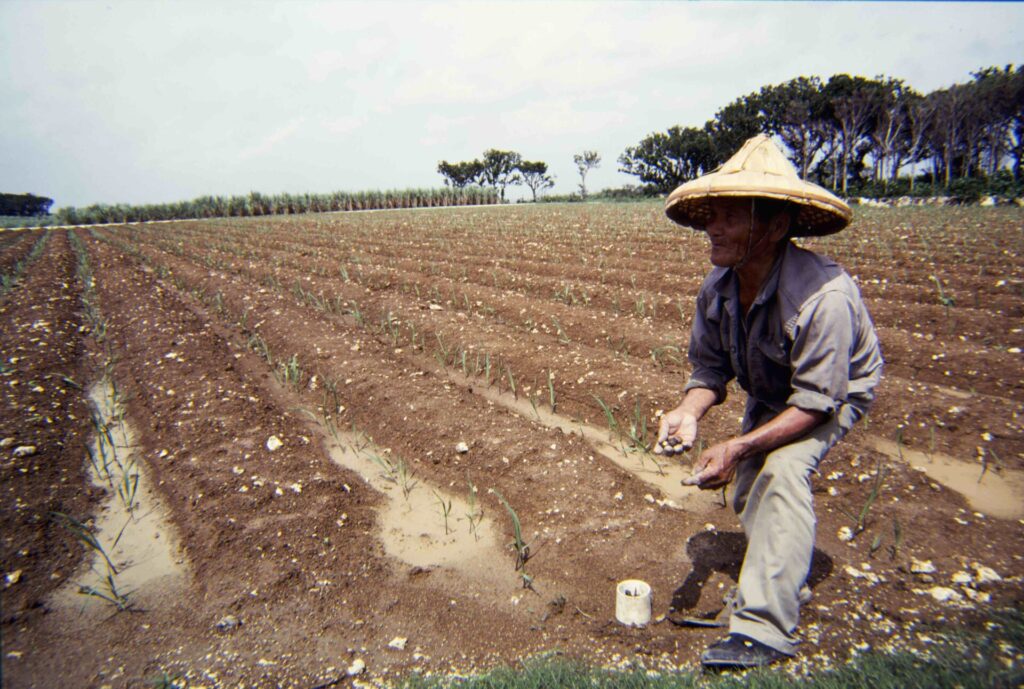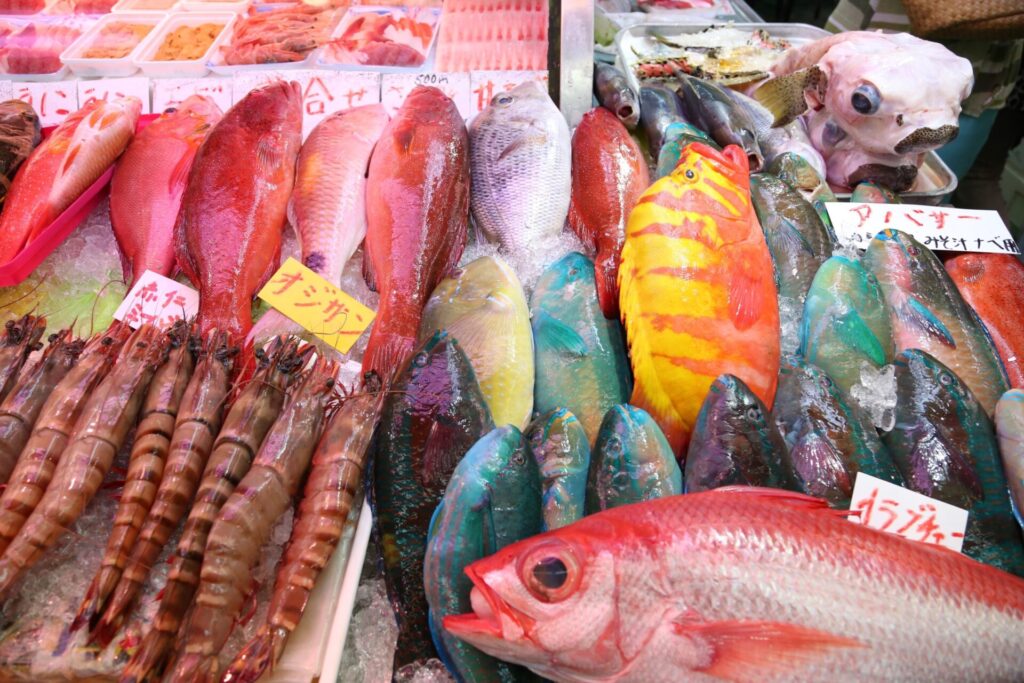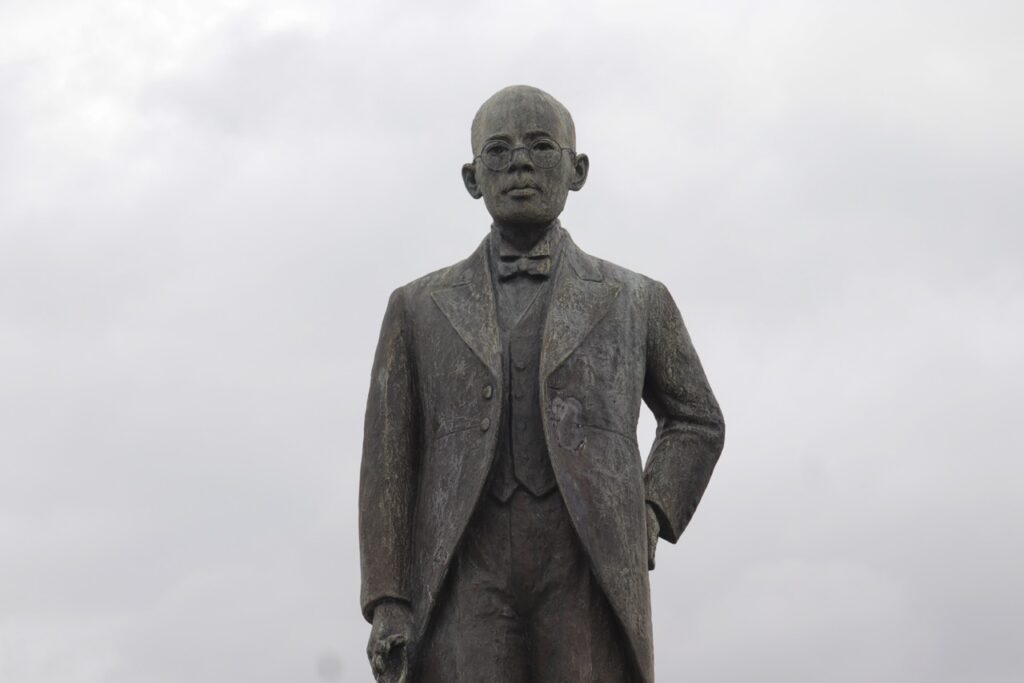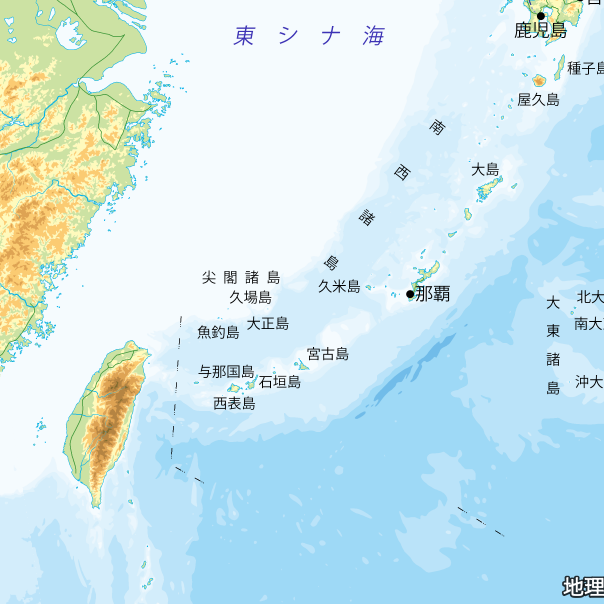Soba

Okinawa soba, much like Japanese soba and Chinese noodles, attracts countless people who can talk about simple dishes with great passion. In the same way, people never get tired of its simple flavors; it also makes an equally interesting topic of discussion.
When it comes to the most genuine form of Okinawa soba, sometimes called suba in Okinawa, there is a wide range of opinions. Discussions with such “experts” can be exhausting, so I asked Arakaki Yoshitetsu, who lived next to a soba vendor in the 1930s and observed them on a daily basis, to explain how the soba was made and enjoyed back then. Through his words, we can discover the original Okinawa soba.
1) A kamado (wood stove) was used for both boiling the soba and making the soup. The process produced good ashes, which were then used to make lye. The ashes were put in a barrel and mixed with water, before the clear liquid at the top was filtered through a cloth to produce the lye, which contained both acid and alkali.
2) Flour was kneaded into dough with the addition of lye. They would prepare a large chunk of dough around the same size as 5 sho of mochi2. Having kneaded it with all their might, it was then stretched a little and covered with a rough hemp cloth. Two men would stand on top, kneading the dough with their feet. This took quite some time and included a short break to allow the dough to rest. The soba’s chewy texture may have come from both the kneading process and the use of the right amount of lye.
3) Next, they would stretch and cut the kneaded dough. This was done in the same way as Japanese soba, using a knife made specifically for the task.
4) The cut noodles were quickly parboiled in hot water. They were then spread out on a large board and coated with rapeseed oil, while simultaneously being cooled by a handheld fan. The oil made the golden soba glisten beautifully.
(The use of rapeseed oil may have been uncommon at the time, as many records say the soba was coated with lard prior to World War II. The aromatic lard was said to have made the soba irresistible.)
5) The next step was preparing the soup, another decisive part of the dish. The broth was made by breaking a pig’s skull and rib bones into small pieces before boiling them in a shinmēnāhbi (a large pot up to 100 centimeters in diameter) for a long time. The bones produced a lot of scum, which was removed before transferring the clear broth to another pot. Salt and light soy sauce were added to complete the soup.
6) The Okinawa soba was then prepared in a bowl. The soba went in first, followed by the soup. Almost immediately, the soup was poured back into the pot, and moments later they would ladle it back into the bowl. This not only warmed the soba, but also removed the extra oil from the noodles. The process resulted in oil and small pieces of dough slowly accumulating at the bottom of the pot. They would sometimes make another pot of soup and mix it with the clear portion of the previous batch.
These days, the process isn’t so complicated. They usually just put the noodles in a colander and parboil it with hot water, before putting the soba in a bowl filled with soup.
7) Add two or three slices of tender pork belly, simmered in a sweet and salty soup, on top of the soba. Cut the shimanegi (Okinawan scallion) into pieces, two or three millimeters wide, and place them opposite the pork. Finally, place shredded beni-shoga (red pickled ginger) in the center, as if separating the other toppings. That’s how Okinawa soba was before the war.
8) When people went to eat soba, there must have been kōrēgūsu2 (preferably at least six months old) on the table. They would sprinkle several drops to add some spice, then take some chopsticks to enjoy it.
That’s the story of Okinawa soba from the 1930s, as told by Arakaki Yoshihiko. The most important step was kneading the flour dough repeatedly.
Anyone who has tasted such simple, savory soba would say that today’s soba is not as flavorsome as before and opt to visit local restaurants in remote areas. I have traveled to many parts of mainland Okinawa, driven by a desire to find the original soba, as well as my own appetite. The soba I had in a small restaurant at the tip of the Motobu Peninsula was quite something, with an amazing texture acquired by using lye in the kneading process.
However, you don’t have to avoid things like sōki soba (a type of Okinawa soba topped with Okinawan-style tender spareribs), which has become popular while also disrespecting the original. Such dishes are popular because so many people enjoy them.
Searching for a food’s original form can be quite a challenge. The Okinawa soba that Uchinānchu (Okinawans) simply call suba was known as shina (Chinese) suba in the Taisho period. The name tells us that the dish originated from Chinese noodles, but how they arrived in Okinawa and became an Okinawan fixture, replacing brine with lye, remains unknown.
In any case, today’s Okinawa soba cannot be found anywhere else. It is a casual local dish unique to Okinawa. And for that reason, it is impossible for me to visit Okinawa and not have Okinawa soba.
Editor’s Note:
- Sho is a traditional unit of measurement in Japan. 1 sho is about 1.8 litres. 5 sho of mochi is about the size of a large kagami mochi, a Japanese traditional New Year’s decoration made with 7.5kg of rice.
- A type of Okinawan chili sauce made of chilis infused in awamori, an Okinawan native rice spirit.





































































































































































































































